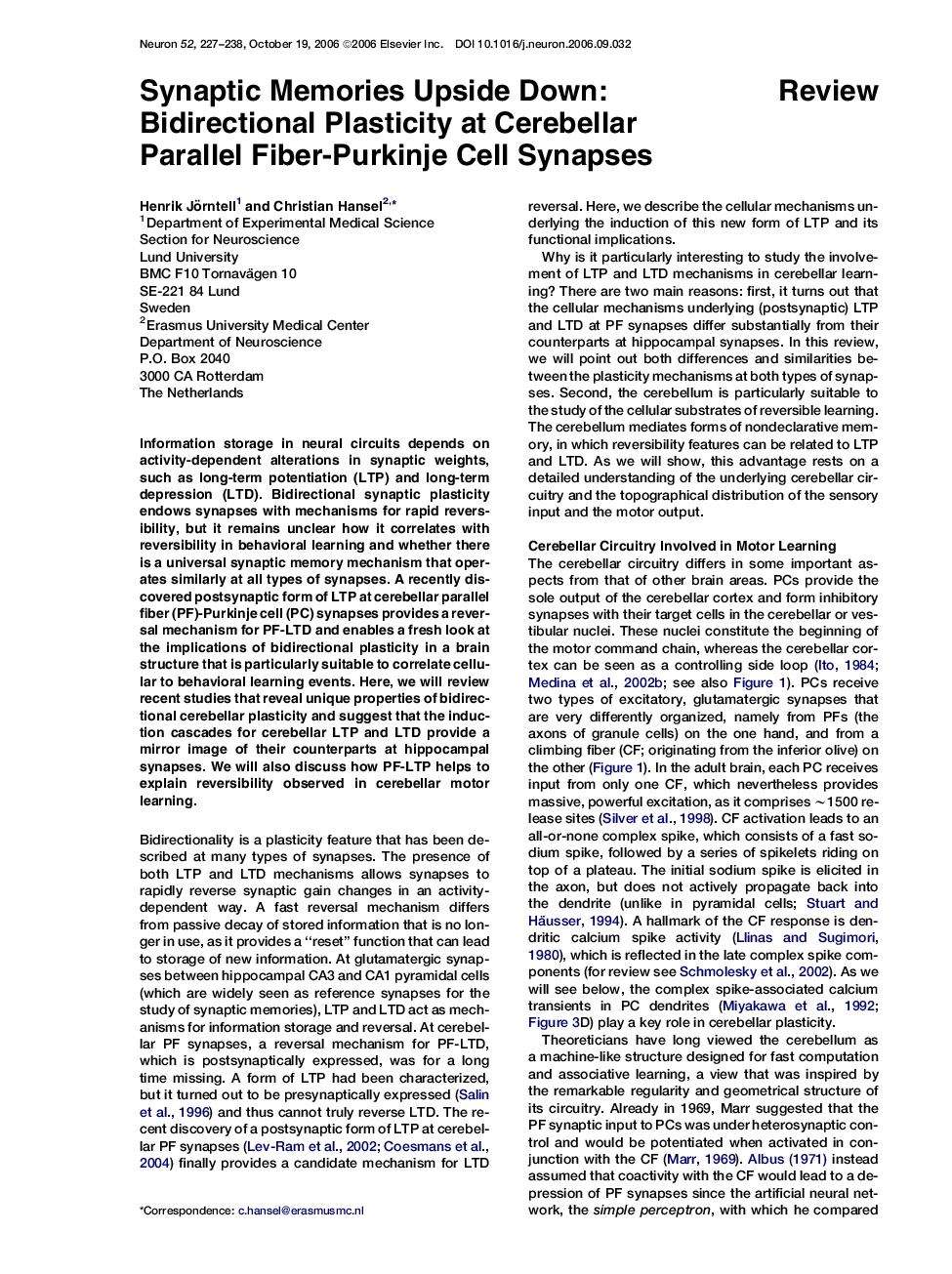| Article ID | Journal | Published Year | Pages | File Type |
|---|---|---|---|---|
| 4322879 | Neuron | 2006 | 12 Pages |
Information storage in neural circuits depends on activity-dependent alterations in synaptic weights, such as long-term potentiation (LTP) and long-term depression (LTD). Bidirectional synaptic plasticity endows synapses with mechanisms for rapid reversibility, but it remains unclear how it correlates with reversibility in behavioral learning and whether there is a universal synaptic memory mechanism that operates similarly at all types of synapses. A recently discovered postsynaptic form of LTP at cerebellar parallel fiber (PF)-Purkinje cell (PC) synapses provides a reversal mechanism for PF-LTD and enables a fresh look at the implications of bidirectional plasticity in a brain structure that is particularly suitable to correlate cellular to behavioral learning events. Here, we will review recent studies that reveal unique properties of bidirectional cerebellar plasticity and suggest that the induction cascades for cerebellar LTP and LTD provide a mirror image of their counterparts at hippocampal synapses. We will also discuss how PF-LTP helps to explain reversibility observed in cerebellar motor learning.
